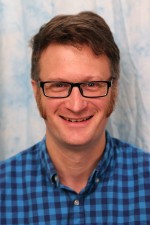
Carnegie Mellon University
2:00 pm to 3:00 pm
NSH 1109
There is a compelling need to determine the location and activity of radiation sources from the flux that they generate. There is also a need to create dense flux maps from sparse measurements. This research solves these dual problems. An example of a situation where these capabilities would be vital is at the location of a dirty bomb explosion. Sparse measurements gathered by a robot could be used to generate an estimate of material distribution as well as expected flux around and within the surveyed area. Previous research has largely focused on locating point sources and the methods typically don’t scale well to locating many point sources. The solutions that could locate area sources did so at the cost of using complex and expensive equipment. This thesis demonstrates an annealing algorithm specialized to the problem of estimating source locations and activity. Those sources can then be used to generate a dense flux map for the surveyed and surrounding areas. The efficacy of this solution is demonstrated by comparing computed versus actual flux maps. The annealing algorithm demonstrated in this thesis can use data from inexpensive, non-directional sensors to generate two dimensional maps of expected source locations and activities. From those sources, dense maps of their gamma flux can be generated for areas within and beyond the surveyed areas.
Committee:
Red Whittaker
Michael Kaess
Joseph Bartels
